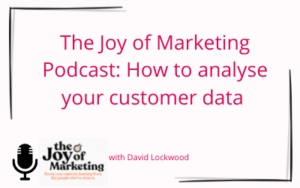It can feel like the deck is stacked against you…
Looming recession and persistent inflation are fuelling social unrest and a cost of living crisis at home. Continuing conflict in the Ukraine and US and Chinese sabre-rattling over Taiwan are keeping geo-political tensions high globally. It’s little wonder the Doomsday Clock has this year moved to 90 seconds to midnight, the closest we have ever been to potential catastrophic annihilation. And it’s also little wonder that consumers have a lot on their minds.
Uncertain times means uncertain consumers. And, as a business, you must know your customers inside out. It is more important than ever to be relevant, helpful, informative and value orientated. Because, unsurprisingly, customers are expecting a lot more bang for their hard-earned and seemingly ever diminishing buck. They expect a lot more for their attention – which means you must strive to offer more personalised and tailored product, advice and servicing at far better cost.
Of course, this means that there will need to be shifts in your marketing. First and foremost, 2023 will see a shift in mindset to anticipation marketing, thereby enabling marketers to anticipate what customers want and then feed that into their marketing processes. After all, mailings are no longer the straightforward sales drivers they once were. Sheer volume is seeing some signs of email fatigue.
Blanket promotions and across the board discounts are not enough. In fact, high discounts might lead to better up-front conversion but worse performance in the long-run. Brand and key messaging is also vitally important. Don’t blanket message your customer base. Target those customers that need a discount to buy and those that don’t.
That is not to say discounting is a bad thing. Take Black Friday. Black Friday will happen. So, plan a campaign, make it agile and adaptable, vary the products and the offers because it will recruit new customers, and those new customers are very likely to order again come December.
But, as mentioned, broad brush promotions need to be replaced with an understanding of customers who are not in need of discount. This will help ensure clarity on who needs promotional spend. By showing added value to customers – be it through exclusivity or service or a combination of factors – you can wean your campaigns away from a reliance on discounts.
You need to focus on how customers actually engage with your brand. This can be from how they search for it – for example, people are much more likely to search for ‘dress’ rather than ‘women’s dress’. Which means keywords research is paramount. You need to understand how Google is tracking and directing customers to you web pages – because it isn’t about the volume or frequency of new pages that a website has. It is about how relevant it is.
You must have confidence to invest in your brand, to invest in and upskill your teams and understand your customer across their journey with your brand. Think mobile first every single time you create customer contacts and touchpoints. And at each touchpoint aim to delight your customer. You see, creating ‘moments of delight’ builds brand advocacy. And when it comes to acquiring new customers, as well as paid traffic, you’d do well to invest in nourishing advocacy.
Because, whilst it is easier to measure paid channels, investing in your existing customers to become advocates can have a far-reaching effect. A customer recruited via an advocate is worth more and is also likely become an advocate themselves, increasing the worth of the initial advocate.
Bear in mind, advocates are different to referrals. They are gained through using your NPS, tracked referrals, reviews, social activity and untracked referral data. And you can also actually turn around customers who have received poor service as well. Solving their complaints quickly, efficiently and personally can create true brand advocates. And true brand advocacy is centred around driving organic, not transactional, referrals from customers. So, also remember that it is important to survey your customers: they want to know that you care what they think… and they want to feel like they’re part of the brand.
Finally, make sure you’ve got the right Key Performance Indicators.
How are you doing at topping up best customers? What is yield from your best customers? What is their lapse rate? What is future value of new customers? Here it may be worth looking more at future customer value rather than lifetime value. Also consider the cost of bringing new customers into the business compared to the cost of reactivation. Reactivation can be of better value on activation and future value. What’s more you always know more about your reactivation prospects than recruits. Well set KPIs drive business understanding. They enable smart decision making.
John F Kennedy once said: “The Chinese use two brush strokes to write the word ‘crisis’. One brush stroke stands for danger; the other for opportunity. In a crisis, be aware of the danger–but recognize the opportunity”.
However, while crisis = danger + opportunity might be a romantically inspiring thought, like a KPI, it perhaps shouldn’t be used to directly drive your business.
More importantly, you need to think critically.
To define problems as what actions are impacting on what outcomes and need to change if a preferred outcome is to be achieved… to assess what you see, hear and read for its veracity… to evaluate ideas, statements or evidence for their relevance, accuracy and completeness… then look for patterns, causations or justifications… use theories or concepts and principles to explain and support an argument… and look for alternate causations and patterns to the conclusions you have made.
At Tapestry we are used to thinking critically. So, if you’d like help understanding your data base, the KPIs you can derive from it and how to incorporate that into your marketing plan, don’t hesitate to get in touch at [email protected].




